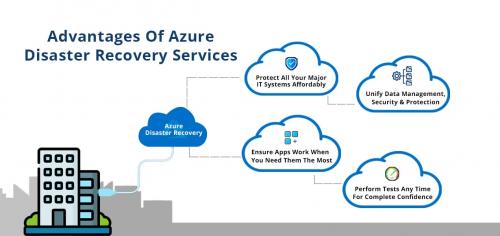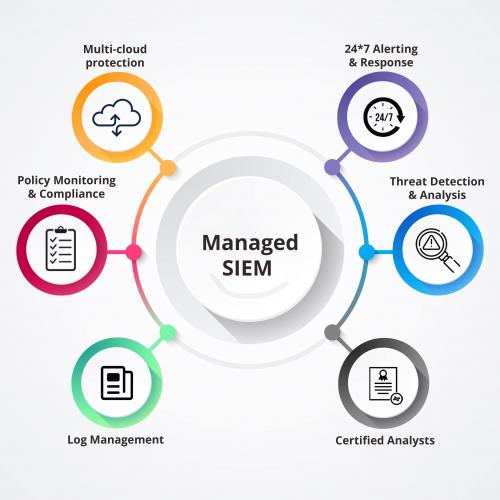Strengthening Your Azure Security Posture: Top Strategies for Enhanced Protection
Securing your Azure environment is essential in today's digital landscape to safeguard the data, apps, and infrastructure of your company. By regularly evaluating, monitoring, and enhancing your security setup, Azure Security Posture Management (SPM) is essential to sustaining a strong security posture. This thorough reference to Azure Security Service Posture Management best practices can help you maintain the security and compliance of your cloud environment.
Azure Security Service: Essential Practices
To ensure robust security for your Azure environment, implement the following best practices:
1. Implement Azure Security Center
Azure Security Center (ASC) is vital for managing and improving your Azure security posture. It provides unified security management and advanced threat protection across your hybrid cloud environment. By regularly reviewing the security recommendations and alerts ASC provides, you can stay ahead of potential vulnerabilities and threats. Configure ASC to automatically apply security policies and compliance standards to your resources to ensure a consistent security posture.
2. Regularly Review and Update Security Policies
Security policies are the foundation of a strong security posture. Regularly review and update your Azure security policies to adapt to evolving threats and compliance requirements. Utilize Azure Policy to enforce rules and automate compliance across your Azure resources. Ensure policies cover key areas such as network security, data encryption, and identity management to maintain a secure environment.
3. Leverage Azure Blueprints for Compliance
Azure Blueprints allow you to define a set of policies, roles, and resources that align with compliance standards and organizational requirements. Use Azure Blueprints to automate the deployment of security controls and ensure consistent application of compliance requirements across your Azure environment. This practice helps streamline governance and reduces the risk of non-compliance.
4. Implement Role-Based Access Control (RBAC)
Effective identity and access management is critical for securing your Azure resources. Implement Role-Based Access Control (RBAC) to grant the least privilege necessary for users and applications to perform their tasks. Regularly audit access permissions to ensure that only authorized users have access to sensitive resources. By doing this, the chance of illegal access and possible security breaches is reduced.
5. Enable Multi-Factor Authentication (MFA)
Multi-Factor Authentication (MFA) adds an extra layer of security to your Azure environment by requiring users to provide multiple forms of verification before accessing resources. Enabling MFA for all user accounts, particularly those with administrative privileges, helps protect against unauthorized access and reduces the risk of credential theft.
6. Monitor and Analyze Security Logs
Continuous monitoring and analysis of security logs are essential for identifying and responding to potential threats. Use Azure Monitor and Azure Sentinel to collect, analyze, and visualize security data across your environment. Implement automated alerts and response mechanisms to quickly address any suspicious activities or security incidents.
7. Secure Your Network with Azure Firewall and NSGs
Azure Firewall and Network Security Groups (NSGs) are essential tools for protecting your network infrastructure. Configure Azure Firewall to control inbound and outbound traffic and implement NSGs to define rules that govern traffic flow to and from your Azure resources. Regularly review and update firewall rules and NSG configurations to ensure they align with your security policies and address emerging threats.
8. Encrypt Data at Rest and in Transit
One essential component of protecting sensitive data is data encryption.Utilize Azure’s built-in encryption features to protect data at rest and in transit. Azure provides various encryption options, such as Azure Storage Service Encryption and Azure Key Vault, to safeguard your data. Ensure that encryption keys are managed securely and follow best practices for key rotation and access control.
9. Conduct Regular Security Assessments
Regular security assessments are crucial for identifying vulnerabilities and assessing the effectiveness of your security measures. Use tools like Azure Security Center’s Secure Score to evaluate your security posture and receive actionable recommendations. Schedule periodic security reviews and penetration tests to uncover potential weaknesses and improve your overall security strategy.
Effective Azure Security Posture Management is essential for safeguarding your cloud environment and maintaining compliance. By following these best practices, including implementing Azure Security Center, regularly reviewing policies, leveraging Azure Blueprints, and securing your network, you can enhance your security posture and protect your valuable assets.
For expert guidance tailored to your specific needs, consider engaging with CloudIBN’s Azure cloud consulting, Azure architect services, and Azure security services. Our team of experts is dedicated to helping you navigate the complexities of Azure security and achieve a resilient, compliant, and secure cloud environment. Contact us today at 020-711-79587 or visit our website www.cloudibn.com to learn more about how we can assist in optimizing your Azure security posture.



Comments